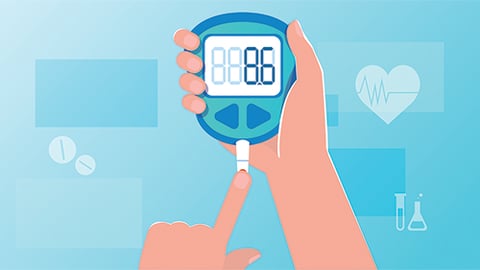Ozempic Conundrum: Holy grail or Pandora’s box?
The Ozempic effect is real. The market cap of Danish drug maker Novo Nordisk, which introduced the brand name of semaglutides, Ozempic and Wegovy, to the U.S. market in 2022, is now as large as the entire rest of Denmark’s economy.
But has that massive wealth creation trickled down to U.S. drugstores? It’s complicated.
For the uninitiated, semaglutide GLP-1 receptor agonist medications treat obesity as well as diabetes (collectively now known as “diabesity”) by mimicking the action of GLP-1, a hormone the body naturally releases upon consuming food.
The net effect is to trigger insulin release that limits blood-sugar levels after a meal, and also slows down digestion, thus reducing appetite so people feel full longer.
“These are really revolutionary medications,” said Kristin Kirkpatrick, RD, a dietician at the Cleveland Clinic’s Department of Wellness and Preventive Medicine, who helps Ozempic patients with everything from injection techniques to dietary counseling that complement the effects of semaglutides.
[Read more: High tech diabetes care]
“Cardiologists used to say to put Lipitor in the water. Will we be saying that about these drugs?” There’s certainly a ready market for them. About a third of Americans are overweight and another 42% have obesity, according to 2017-18 NHANES data. (Fryar, 2020) Already, one in eight adults in the United States have taken Ozempic or another GLP-1 drug, according to a KFF survey conducted in April 2024.
In May, Novo Nordisk said at least 25,000 people in the United States are beginning a protocol with Wegovy each week—an incredible statistic on its own and even more so considering that number was only 5,000 a week in December 2023.
The drugs sell for $1,000 a dose. But that doesn’t mean pharmacies are sharing in those riches. Not by a country mile.
Even so, stores are finding ways to capitalize on this paradigm shift in how Americans deal with obesity and diabetes. Some places are doing quite well—and they’re not even selling the medications. But they do offer insights to how drug store managers can position products to support the health of patients and to stores’ own bottom lines.
Holy grail or Pandora’s box?
The healthcare of Ozempic is robust indeed. More than 350 trials are underway on semaglutides, but they are also being studied for Alzheimer’s, alcoholism and sleep apnea. And while business is booming for the pharmaceutical manufacturers, by the time the boom trickles down to pharmacies, it is indeed a trickle—at best.
[Read more: Health for Mankind unveils Diabimetrics]
“These drugs are literally toxic for retail pharmacies,” said Drew Massey, director of pharmacy at Fruth Pharmacy, which has 24 locations in West Virginia, Ohio and Kentucky. “The general perception is they are helping pharmacies make up lost revenue. The truth is much more of a Pandora’s box where a tragedy is disguised in the form of a gift. They will lead to increases in pharmacy closures and widening pharmacy deserts.”
Massey cited cash flow issues around stockpiling because of supply-chain issues including some insurance companies requiring a three-month supply, leading to refrigeration expenses.
“While revenue is up, margin is often negative,” said Massey. “Many pharmacies have considered not carrying the product line at all.”
The financial strain is real. Pharmacy retail giant Walgreens announced in June that it will close as many as 25% of its 8,700 stores nationwide in the next three years amid a “challenging U.S. retail environment and recent pharmacy industry trends” that have eroded pharmacy margins, CEO Tim Wentworth said in a June 27 investment update.
Semaglutide Science
The safety and efficacy of semaglutides were studied in four recent 68-week trials. Three were randomized, double-blind, placebo-controlled trials (including 16 weeks of dose increases to curtail side effects) and one a DBPC withdrawal trial in which patients either continued with the treatment or switched to a placebo.
One was published in the New England Journal of Medicine. (Wilding, 2021) Another in The Lancet (Davies, 2021). Another in JAMA. (Rubino, 2022). Top-shelf journals, all. More than 2,600 patients received Wegovy for up to 68 weeks in these four studies and another 1,500 patients received placebo. The largest placebo-controlled trial enrolled adults without diabetes. The average body weight was 231 pounds and average BMI was 38.
Individuals who received Wegovy lost an average of 12.4% of their initial body weight compared to individuals who received placebo.
The Lancet trial enrolled adults with Type 2 diabetes. The average body weight was 220 pounds and average BMI was 27. The trial used two dosages—2.4 mg, which is used for obesity, and 1.0 mg, the diabetes-approved dose.
Individuals on 2.4 mg Wegovy lost 9.6% of their initial body weight, while the 1.0 mg dose group lost 3.4% body weight compared to the placebo group.
The medications appear to cut out “food noise” that tells peoples’ brains to nosh on food. For this reason, semaglutides are also now being studied on alcohol use. (Chuong, 2023)
Side effects were mostly of the gastrointestinal type—nausea, diarrhea, vomiting, constipation, indigestion, flatulence and GERD.
The Walgreens update cited “reimbursement pressure” as leading to the financial woes of the chain.
“The reality for pretty much all retail chains is there are high top-line revenues,” said Onisis Stefas, CEO of Vivo Health Pharmacy, which runs 10 pharmacies in Manhattan and Long Island, N.Y., “but at the end of the day you could have negative margins.”
[Read more: Accessible injectables]
The problem is the current economics of dispensing drugs, especially when considering direct and indirect reimbursement rates, the three-month time lag between patients presenting coupons and pharmacies getting their return and insurance providers and pharmacy benefit managers getting their cut. The day-to-day energy and expense of a facility, labeling and effort to fill prescriptions are also concerns.
“GLP-1s for the most part you’re losing money,” said Stefas. “A lot of times pharmacies make up the delta on generics.” And there’s the rub. Generics provide the real value to pharmacies. “Many pharmacies are struggling with losing money on brand medications, and GLP-1s are not an exception to that,” said Jeremy Faulks, vice president of pharmacy operations at Thrifty White Pharmacy, a chain of 88 stores serving the upper Midwest from Minnesota to Montana. “I hear about independents and even small chains that no longer stock many brand meds.”
Every pharmacy manager we contacted agreed that the current business model for brand-name drugs does not support pharmacies actively growing in this space. But necessity is the mother of invention, and pharmacies are looking at other ways to stay alive.
“You have to look at the whole patient,” said Stefas. “They’re not just getting that one branded drug, but there are other medications, too. That’s where you can turn a profit and stay in business.”
Other strategies besides generics also exist. Although all-too-frazzled pharmacists don’t always find time to recommend supplements, well-placed protein and fiber products near the pharmacy counter help patients facing dietary choices. QR codes and store apps are simple ways to provide information to consumers without taking time away from pharmacist staff. Kirkpatrick said drugstores have an opportunity. She explained that education could be around basic guidelines with the semaglutides like gastrointestinal upset remediation or recommending eating frequent small meals.
[Read more: Diabetes market faces disruption]
Protein, along with fiber, is the foundation for every meal replacement product. That’s because fiber also nips hunger pangs. “Any time you lose weight you’re going to lose a little bit of fat and a little bit of muscle,” said Kirkpatrick. “We want to change the balance scale to lose more fat and maintain the muscle. So optimizing protein is critical.”
The dietician’s recommendations are a hit at retail. Look no further than The Vitamin Shoppe, which is reporting a surge in sales in its 700 retail outlets nationwide. Protein drinks were up 10% in 2023, meal replacements up 15%, blood-sugar supplements up 40% led by berberine (“nature’s Ozempic,” according to TikTok posters), which jumped 50%. Unflavored protein powders are up 12% in the first four months of 2024.
“Pharmacists definitely are in a good position to provide guidance and counseling on supportive therapies,” said Faulks. “Our teams provide a good deal of information to patients around available supplements, vitamins and other options that may provide benefit.”






